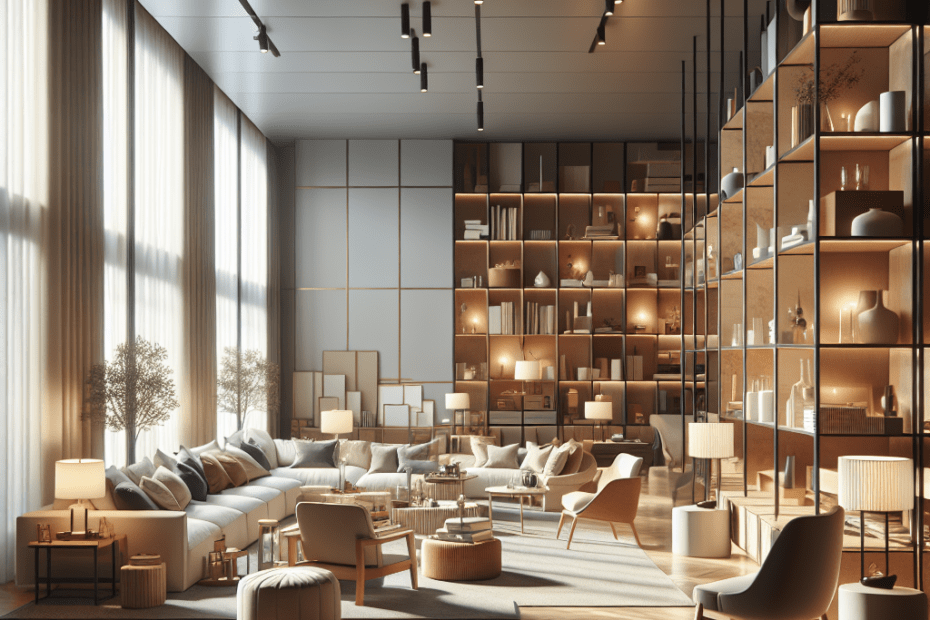“`html
Introduction
In today’s modern homes, large open spaces have become increasingly popular, providing a sense of freedom and relaxation. However, arranging furniture to create flow in these expansive areas can be challenging. The secret to a successful open space furniture layout lies in understanding how to balance open areas with functional spaces, creating harmony and comfort for everyone. By arranging furniture wisely, anyone can transform their open space into a cohesive and inviting environment.
Understanding Open Spaces
Open spaces are typically characterized by large rooms without walls separating the living, dining, or kitchen areas. According to a study by the National Association of Home Builders, more than 75% of newly constructed homes feature open floor plans 1. This trend reflects the desire for interactive and flexible living areas.
The Importance of Furniture Layout
An effective open space furniture layout can greatly enhance the ambiance and utility of a room. It encourages movement and interaction among people, facilitating a welcoming atmosphere. Furniture should be arranged to define areas within the space, allowing users to navigate easily without feeling cramped.
Key Strategies for Arranging Furniture
- Create Zones: Divide the open area into functional zones such as a sitting area, dining space, or workspace. This can be done using area rugs, varying furniture styles, or even different lighting.
- Flow and Movement: Ensure easy movement around furniture. Paths should be clear and intuitive, promoting a natural flow.
- Symmetry and Balance: Use furniture to balance the room symmetrically. This can create an aesthetically pleasing environment that feels orderly and harmonious.
- Focal Points: Identify focal points like a fireplace, artwork, or a significant piece of furniture. Arrange other furniture pieces around this focal point to draw attention naturally.
Incorporating Different Furniture Types
| Furniture Type | Purpose in Open Spaces |
|---|---|
| Sofas & Couches | Defines seating areas and provides comfort. |
| Coffee Tables | Acts as a central feature, encouraging social interaction. |
| Bookshelves | Doubles as storage and room dividers. |
| Buffets/Sideboards | Provides additional storage and separates dining spaces. |
| Accent Chairs | Adds flexibility and extra seating options. |
The Role of Decoration and Accessories
Decorations and accessories enhance the personality of a space. Items like throw pillows, curtains, and artwork add layers and depth, making the large spaces cozy. Meanwhile, strategically placed plants bring life and freshness to an area, breaking any monotony of large spaces. Choosing the right accessories to complement the furniture is essential for a cohesive look.
The Magic of Lighting
Lighting plays a significant role in open spaces. Proper lighting can influence mood and enhance visual appeal. Various light sources, including overhead lights, table lamps, and floor lamps, create ambiance and define different areas. Natural light should also be embraced, using sheer curtains to diffuse light evenly throughout the space.
Key Takeaways
- Open space furniture layout requires careful consideration of zones and flow for effective arrangement.
- Diverse furniture pieces serve different purposes, enhancing both form and function.
- Decorations and lighting significantly impact the ambiance and usability of open spaces.
- Balance, symmetry, and focal points are vital in creating harmony in large areas.
FAQ Section
-
What is an open space layout?
An open space layout is a design style where multiple functions such as living, dining, and kitchen areas are integrated into a single, expansive space without walls.
-
How do you create zones in an open space?
Zones can be created using area rugs, different furniture arrangements, lighting differences, and decorative features like bookshelves as dividers.
-
What furniture is best for defining spaces in an open layout?
Sofas, bookshelves, and rugs are excellent choices for defining separate spaces while maintaining openness.
-
Why is lighting important in open spaces?
Lighting affects the mood and usability of a room. It helps in differentiating zones and can make the space feel more inviting.
-
How can you make large open spaces cozy?
Incorporating warm colors, textured fabrics, layered lighting, and personal accessories can make a large open space feel cozy and inviting.
“`
